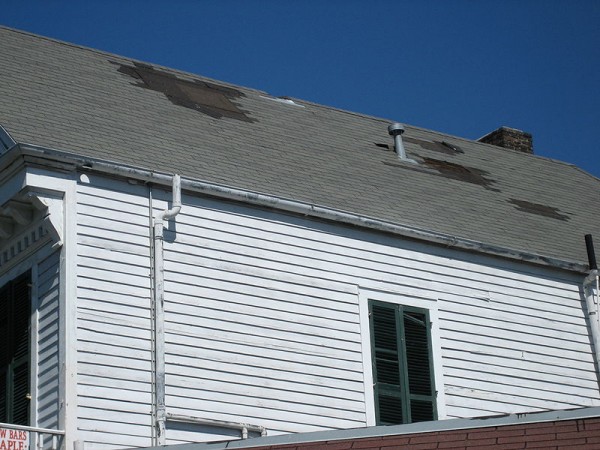As everyone knows, weather can damage homes and other buildings, but particularly roofs, and every type of weather pattern brings different problems. When you hear the wind outside screaming and rain is coming down at a rate of five gallons per hour, you know the roof is taking a severe beating. Also, when you hear the hail pounding on the roof like popcorn, the roof is likely the most affected part of your building.
Roof systems are affected by multiple types of weather-related hazards, depending on the location of the building and the roof type, but two weather patterns are the considered the anathema to every roof: hail and severe wind.
Other vicious hitters include any water damage, caused by ice, deluge, or snow, coupled with ample temperature changes. Also, in areas with hot summers, extensive sun damage may also be considered an important factor to take into consideration.
Severe wind damage
All roof systems are designed to withstand normal wind loads caused by storms and other weather-related phenomena. However, when the loads become severe, as in the case of tornadoes and hurricanes, most roofs will suffer immense damage, regardless of their type or structure.
During storms, the gusts of wind affect roofs differently, depending on a variety of factors. Some areas of the roof will be subject to higher pressures, suction, or torsion forces, whereas other areas will remain relatively unaffected. Typically, in a powerful wind storm, the perimeter of the roof is the most fragile area, especially around the corners and the overhanging edges.
This is because the wind blowing across the roof exerts a higher pressure on the lower areas, creating a suction effect. Also, depending on the shape of the roof, the wind can cause a “slapping” effect, similarly to the sensation caused by the wind blowing in your face during a storm. In severe cases, this “slapping” effect can cause the collapse of the roof.
Roof damage only starts to become a problem when the materials are moving. Once the underside of the roof becomes visible and affected by the gusts of wind, a “peeling” effect starts, that can damage the whole roof, lifting the roof covering, including the thermal insulation and the structural elements. The roof damage starts small and grows exponentially, as the wind increases, tearing the whole structure apart.
Hail damage
Hail is one of the most vicious weather-related phenomena that can affect any roof. While many people believe that hail only causes punctures, and they are easy to detect and fix, hail also causes structural damage to the roof that is very hard to detect.
In fact, punctures are usually extreme events and they are rather easy to spot and mend, but the most disastrous effect of hail is the damage to the structural integrity of the roof system, which can lead to severe consequences.
Every piece of hail that falls on the roof can cause ruptures and bent areas that may affect the waterproof membranes and insulation. All these damaged areas have two things in common: they are very hard to detect, and they create weak points in the roof system.
Getting too many weak points will cause cracks, holes, cuts and tears in the roof covering, waterproof membrane and other components. Many of these damages may go unnoticed for years, until a powerful storm hits the area, causing total roof damage.
Sleet, Snow, and Ice Damage
Water is always a trouble-maker for any roof, and this is especially true during the winter, when temperatures drop below the freezing point. Also, the constant freeze/thaw process has a lasting impact on the health of your roof system. Long periods of low temperatures may cause large buildups of snow and ice, especially on the perimeter of the roof, causing high structural loads for the entire building.
Depending on the shape of the roof, blizzards may pile up snow in certain parts of the roof, causing a partial collapse. For instance, you may have one foot of snow in the center of the roof, and five feet of snow on the northern edge, causing an unnatural distribution of loads.
Also, the areas where the roof adjoins a vertical wall may become particularly prone to water damage. Here, water stagnates for longer periods, creating a risky freeze/thaw process that may cause infiltration.
The same also applies to awnings and canopies. As it freezes, the water expands and, if this process continues, it can cause severe damage to the roof. The bad news is that fighting this freeze/thaw process is difficult, and the only thing you need to do is to ensure proper maintenance.
The writer, Flaviu Mircea, is the sort of person who just loves making improvements to his home where-ever possible. However, the roof is admittedly something he would not handle himself, for roof repair and replacement he turns to the experts at www.reroofusa.com. You can learn more about Flaviu on Google+.
